Digital wizardry brings cultural heritage to life
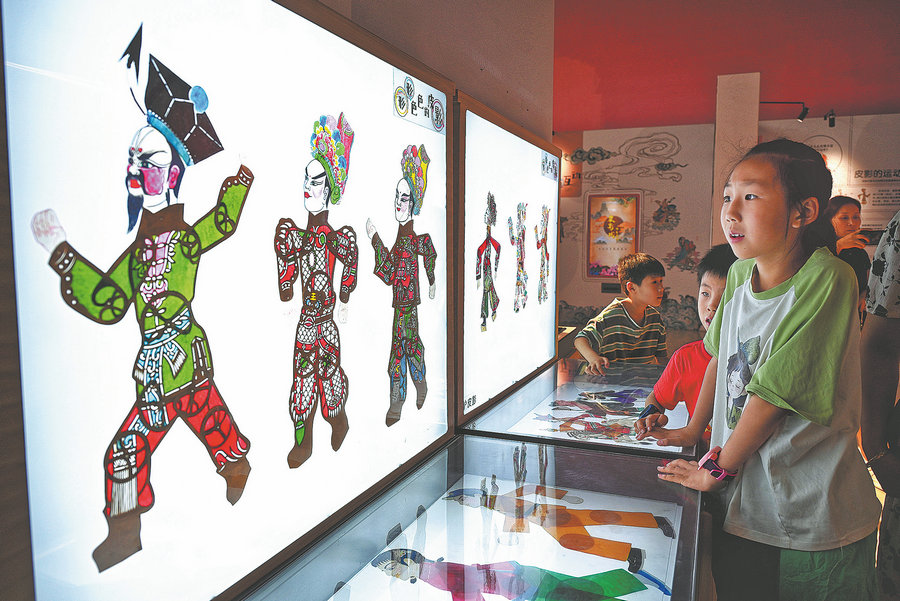
A three-dimensional ancient wine vessel suddenly appears above a screen, floats in the air, and moves in various directions under the instructions of controller Su Gaofeng.
Members of the crowd gathered in front of a computer screen at the eighth China Intangible Cultural Heritage Expo in Jinan, Shandong province, in mid-October, let out exclamations of delight and awe.
However, the amazing spectacle wasn't achieved with the help of wearable devices such as virtual reality glasses.
Thanks to 3D technology, viewers only need to adjust their distance from the screen for built-in cameras to capture their eye movements. The system uses algorithms to make the zun, an ancient wine vessel, come alive, said Su, a faculty member at Beijing Union University's College of Art.
The visual display is intended to help expo visitors gain a better appreciation of the artwork and its intricate cloisonne craftsmanship, which was named a national intangible cultural heritage in 2006.
"In the virtual world, we've set up the entire process of cloisonne production, from blueprints, mold making, wire inlays, enamel painting, firing, and polishing to gilding," said Su, who specializes in 3D-animation design, 3D-digital sculpture, and VR development.
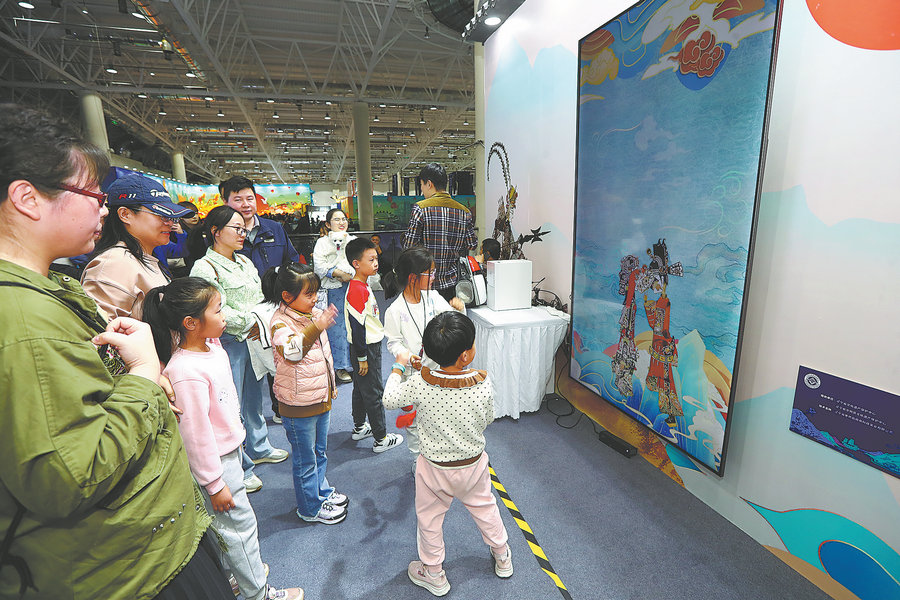
"Now, with the aid of technology, the audience can experience this in a very short amount of time," he said, explaining it's difficult for the public to gain access to the art form due to its high level of craftsmanship and the complex production process involved.
"It requires a high level of expertise and dozens of artisans to participate and work together, and the production cycle is long," Su said.
"Especially the enamel firing process, which requires a temperature above 800 degrees, making it hard for ordinary people to experience or appreciate it directly," Su added.
The 3D modeling and rendering can give a realistic depiction of the form, colors, textures, and details of the objects, and immerse viewers in the craftsman's environment.
"We have enhanced interactivity by using augmented reality, and visitors can use AR spatial interactive pens to explore the full production process of cloisonne, including steps such as making the base, applying the wirework, adding enamel, and firing," Su added.
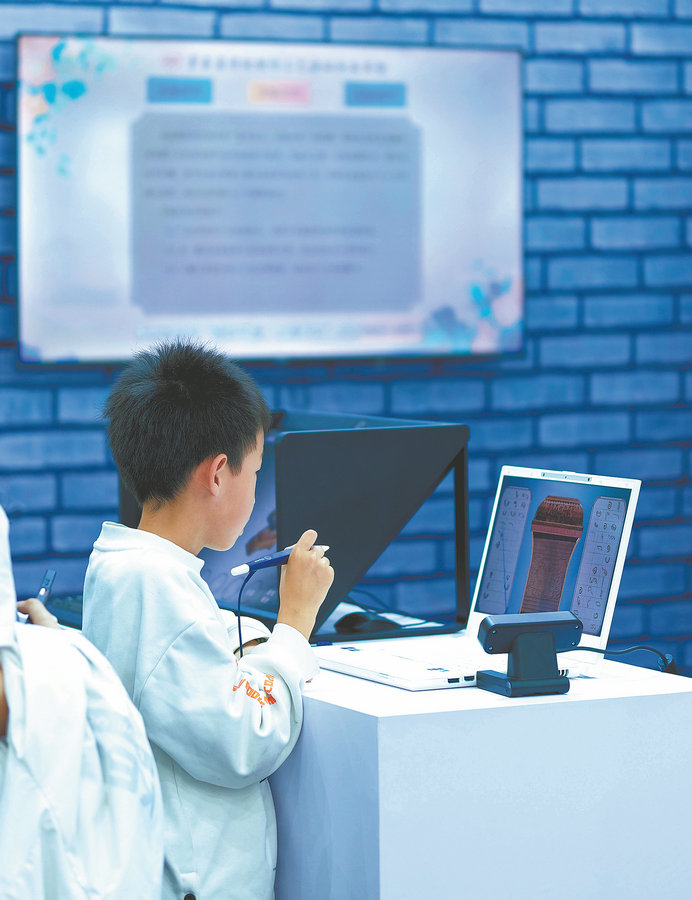
Enamel veneer
Cloisonne production was one of the many subjects explained through high-tech methods at the expo, which was hosted by the Ministry of Culture and Tourism, to bring intangible cultural heritage items closer to the public.
The expo, which ran from Oct 17 to 21, showcased the achievements of China's intangible cultural heritage protection over the 20 years since it joined the UNESCO Convention for the Safeguarding of the Intangible Cultural Heritage, according to the ministry.
More cultural items have made their presence felt in the modern age with the aid of technology.
Tai chi has recently increased in popularity among young people, and some of them have practiced the martial art with the help of a virtual instructor. The virtual guide was developed by the Henan Intangible Cultural Heritage Creative and Intelligent Design Lab at Zhengzhou University of Light Industry based in Henan province.
Tai chi originated in Henan's Wenxian county and is characterized by relaxed, circular movements that work in concert with regulated breathing and the cultivation of a righteous and neutral mind.
The virtual system immerses users in various tai chi practice sites, including the ancestral hall of its founders, a peaceful natural environment, and a modern martial arts training center. It intends to give them insight into the profound culture behind tai chi and provide an ideal learning environment.
"You can see them in action dressed in cosplay costumes," Zhang Qian, director of the lab, said.
"During the initial stage of scene design, our team conducted research and found that many tai chi enthusiasts prefer practicing in specific environments," Zhang added.
His team wrote computer code for each function, covering real-time user movement detection, gesture recognition, and evaluations. "We adopted Kinect technology to achieve motion-sensing interaction, providing users with a real experience," Zhang said.
Users begin the immersive tai chi experience by standing inside a blue circle and raising their right hand. So far, the system offers eight classic tai chi movements.
"It guides users through each movement using on-screen text, voice prompts, and real video demonstrations. Using Kinect's skeletal tracking, the system compares users' movements to the preset standard movements and provides real-time feedback such as 'perfect' or 'good' or 'try again', helping users adjust their movements," Zhang explained.
A rating system encourages users to work their way through levels of difficulty and hone their skills.
Before the interactive program's launch in July, Zhang said his team had conducted extensive surveys on different age groups and careers, and optimized the design according to the feedback.
The goal was to enable more people to experience the unique charm of tai chi firsthand, he said.
In 2020, tai chi was included in the UNESCO Representative List of the Intangible Cultural Heritage of Humanity.
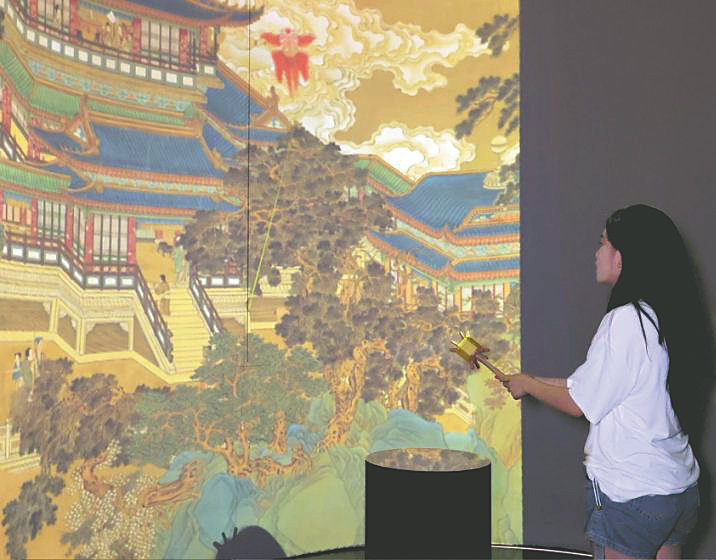
Fairground attractions
Expo visitors were also able to experience the Majie Quyi fair through an AR program developed by the lab.
The fair was named a national intangible cultural heritage in 2006.Boasting a history of more than 700 years, it was traditionally hosted during Spring Festival in Baofeng county, Henan, and featured various Chinese folk arts, including ballad singing, comic dialogues, clapper talk, and crosstalk, all of which remain popular among Chinese people.
"Using technologies such as 3D modeling and spatial positioning, we have brought the grand scenes of the fair into an AR virtual environment," Zhang said.
Through motion-sensing devices, visitors can touch and "play" the instruments of the performing artists and read their scripts, he added.
Expo visitors also had the opportunity to experience flying a kite indoors through the Kite Travels program developed by Shanghai-based digital technology firm ALight, and artist Chen Hailan.
"By pulling a kite string on a screen, an audience member can not only control the rise and fall of the digital kite, but also feel the tension in the string," said Chen, who was born in Yangjiang, Guangdong province.
Yangjiang's kite craftsmanship was named a provincial intangible cultural heritage in Guangdong in 2006.
Each time a kite is launched, its design changes within the confines of a digital painting that features a Chinese garden and traditional architecture.
"We not only want the audience to see and experience it, but convey the culture embedded within it," Chen said, adding that the kites are not just a cultural symbol, but also carry joyful childhood memories.
She said she focused on the kite in the hope of preserving traditional cultural elements through modern technology, including interactive technology and VR, to give it new life and expression.
Chen and ALight decided the background should be a classical painting by Zhao Boju, an artist during the Song Dynasty (960-1279). The work features historical pavilions, and mountains touched by floating clouds.
"It was selected due to its rich elements that suit the spatial design of the whole exhibit, transitioning from distant to near elements. The artwork's content and style also fit well with the narrative of traditional kite culture," Chen explained.
To provide the user with a real sense of interaction, the creation team used a mechanical device to simulate the pulling of the kite string. Algorithms were also used to simulate aerodynamics, with the kite swaying as it flies through the air, Chen said.
To better engage users, a new kite style is randomly generated every new flight.
"This not only allows each visitor to experience different kites, but also ensures that every interaction is unique," she added.
This digital kite flying experience has already been displayed at several cultural and digital art exhibitions. Chen said she has been overwhelmed by the positive and enthusiastic response of visitors.
"Many of them said the interactive experience brought back the pure joy of their childhood memories associated with flying kites, and the digital interaction provided them with a fresh perspective and experience of traditional culture," Chen said.
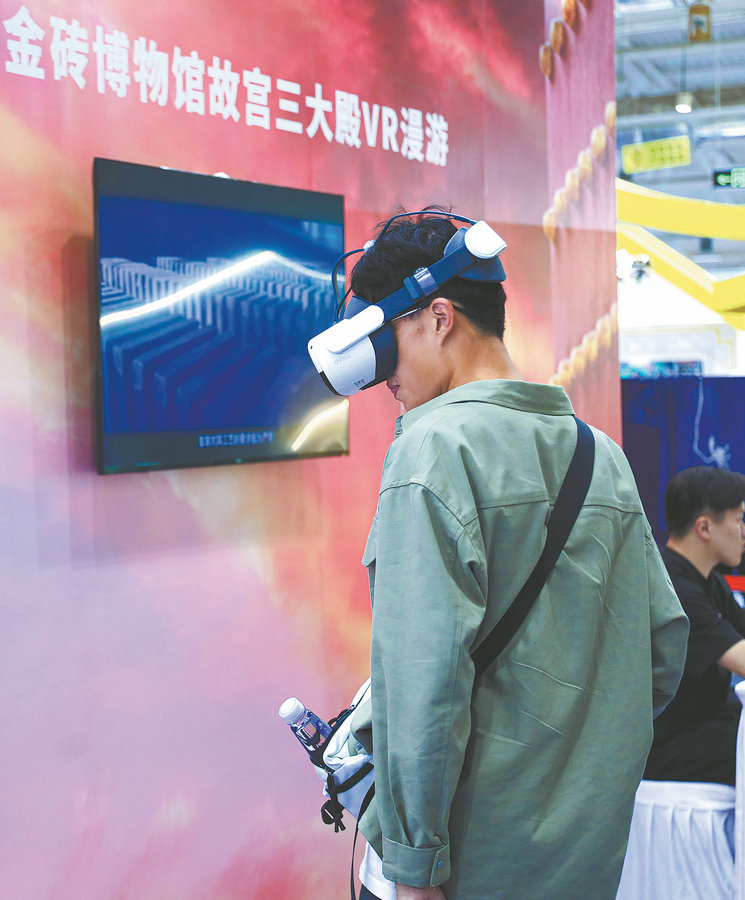
Rapid progress
After the formulation of the traditional craft revitalization plan in 2017, and the promise to advance the national cultural digitalization implementation strategy in 2022, the digitalization of intangible cultural heritage has advanced at an unprecedented speed, said Liu Xinchen, a faculty member with the Zhejiang Guangsha Vocational and Technical University of Construction.
These laid a solid foundation for the widespread dissemination of, and innovative measures introduced in intangible cultural heritage, Liu added.
Immersive experiences show great development potential and have a broad range of applications, she added. They accurately reproduce historical scenes involving intangible cultural heritage that resonate with participants and allow them to experience their charms and deepen understanding, Liu explained.
"Through the integration of interactive devices and the 'gamification' of design elements, immersive experiences transform visitors from passive spectators into active participants in the transmission of intangible cultural heritage techniques, helping enhance public cultural engagement and awareness of preservation," she said.
"This deep engagement opens up highly effective communication paths for the transmission and innovative development of intangible cultural heritage."
Su, from Beijing Union University, said 3D displays are more engaging than traditional text and image-based displays. They leave a stronger impression on viewers and attract more interest in intangible cultural heritage, he said.
"Digital technology breaks the limitations of time and space, offering more people the opportunity to learn and inherit these traditional arts," Su said.
It also sparks the interest of younger generations, and better promotes the development and evolution of intangible cultural heritage, he added.
"I believe that with the development of technology and the iteration of techniques, more display scenarios will emerge to interpret the culture behind intangible cultural heritage," Su said.
